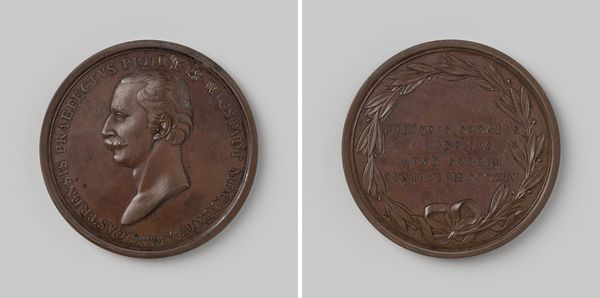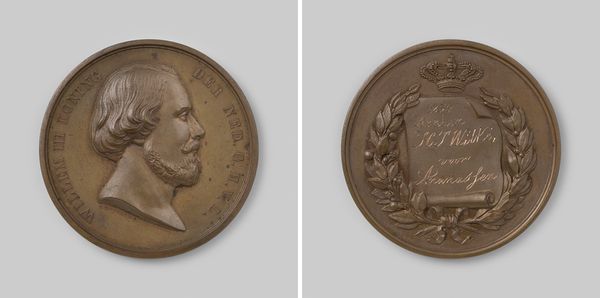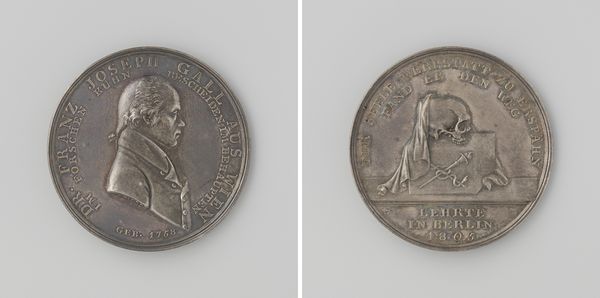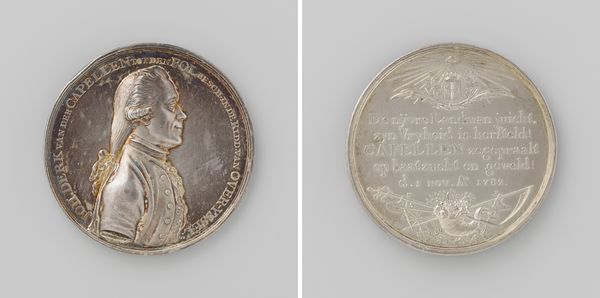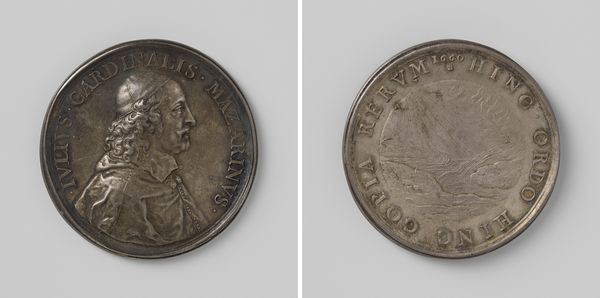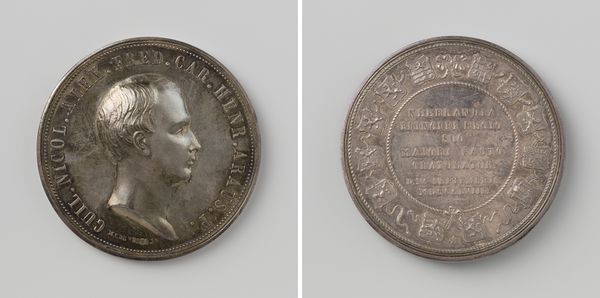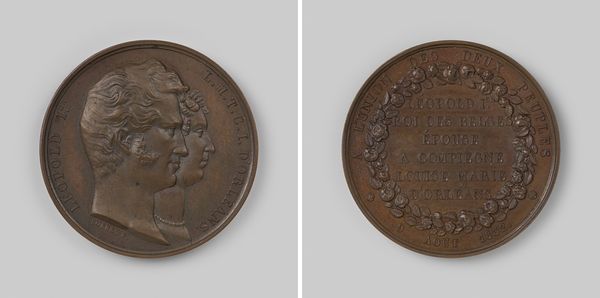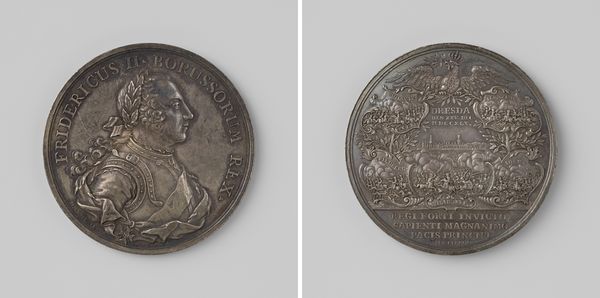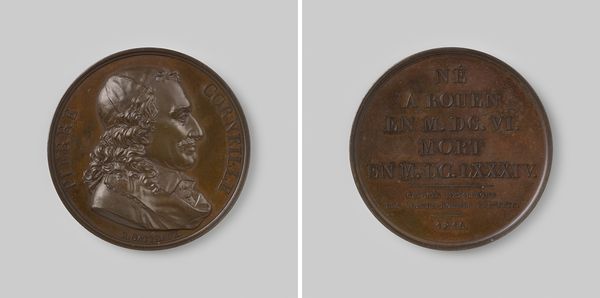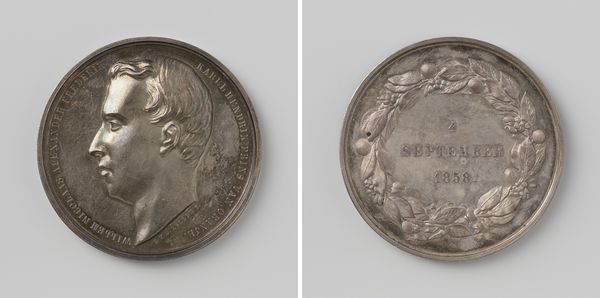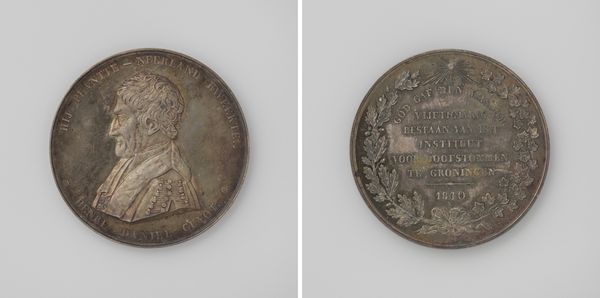
relief, bronze, sculpture
#
portrait
#
medal
#
sculpture
#
relief
#
bronze
#
sculpture
#
academic-art
Dimensions: diameter 3.9 cm, weight 31.25 gr
Copyright: Rijks Museum: Open Domain
Curator: Here we have a bronze relief sculpture by Carel Begeer, created in 1887 to commemorate the 70th birthday of King Willem III. It’s a commemorative medal, a tangible piece of history. Editor: My first thought is that it’s surprisingly intimate, even a little melancholy. Despite being a celebratory object, the somber bronze and the serious profile give it a weight, a gravitas beyond just celebration. Curator: It’s a fascinating example of academic art applied to a public, political purpose. Begeer, the artist, clearly aimed for a certain kind of timeless dignity, fitting for a monarch. Editor: Do you think it was common to represent monarchs this way? All powerful and stoic? Seems that is at odds with marking a celebratory event. Curator: Not always, but certainly a common trope for rulers aiming to project stability and authority. The profile view itself is steeped in historical reference, think Roman emperors on coins. It subtly connects Willem III to that lineage of power. Editor: True, you can certainly sense that visual connection to antiquity and the notion of ‘eternal rule’. The text surrounding Willem III adds a further note of authority to the representation. I am curious about the inclusion of foliage. Any symbolism behind this decision? Curator: The laurel wreaths often symbolize victory, triumph, and honor and contribute to the overall sense of official recognition and high respect towards the King. The use of bronze itself as well gives that feel of solidity, endurance, of legacy. Editor: Thinking about today, what kind of messages and visual language are politicians pushing for legacy building and creating similar 'immortal' representations? Curator: I would suggest maybe comparing imagery from current elections campaigns. See how our elected officials wish to be viewed, and the symbolic and emotional techniques implemented, Editor: A wonderful task for visitors after observing the bronze relief by Begeer. I am starting to look at how such symbols affect the public at the time the item was unveiled and today. Curator: Exactly! And perhaps even reflect on how we ourselves wish to be seen and remembered.
Comments
No comments
Be the first to comment and join the conversation on the ultimate creative platform.
